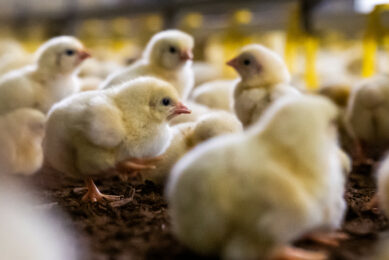Amino acids, trace minerals and feathers
Recently completed research* funded by the US Poultry & Egg Association studied the effects of dietary sulfur amino acids and trace minerals on feather cover in laying hens.
Feather cover is important for its insulation value and protection from
scratches and injury to the hen’s skin.
In commercial settings, surveys
indicate a rapid deterioration in feather cover after the hens are about 40
weeks of age, with some recovery after molt and then again a rapid deterioration
during the second cycle of egg production.
The United Egg Producers
Animal Husbandry Guidelines also note the importance of adequate feather cover
for the welfare of the laying hen.
Objectives
The
objectives of the research were to test the level of cystine and methionine
supplementation necessary to optimise feather cover during the first and second
cycles of egg production, and to investigate the effects of supplemental
selenium (Se) or zinc (Zn) on feather cover through the first and second cycles
of egg production.
Results
Egg production (EP) was
significantly affected by dietary amino acid treatment during all three phases
of production. During Phase 1, EP was greatest for hens on the control diet (low
methionine and basal cystine) or high cystine diets.
During Phase 2, EP
was greatest for hens fed the highest level of methionine supplementation. There
was no benefit to cystine supplementation during Phase 2.
During Phase
3, positive effects of high levels of methionine or cystine supplementation were
quite apparent for improved egg production.
Trace mineral
supplementation had a transitory effect on egg production during Phase 2 of the
study, showing improved EP when hens were fed inorganic Se combined with 100 ppm
Zn from Bioplex.
Egg weights were only significantly affected during
Phase 2, at which time hens fed the highest level of methionine had the greatest
egg weights.
Cystine and methinionine supplementation inconsistently
improved egg weights during Phase 3 whereas trace mineral supplementation had no
effects on egg weight.
Feather scores by both feather quality scales
(Webster and Hurnik’s for overall or Tauson’s for five different areas of the
body) did not show any dietary amino acid or trace mineral treatment effects.
Age significantly affected feather scores as one might expect. After 46
weeks of age, feather scores significantly decreased by both scales, reaching a
low point by 64 weeks of age.
Feather scores significantly rebounded
following the molt but were not positively influenced by the dietary
treatments.
Conclusion
High levels of methionine or
cystine supplementation had positive effects on egg production and egg size.
Cystine was as effective as methionine at the highest treatment levels.
Unfortunately, the levels of methionine and cystine supplementation used in this
trial were not able to prevent normal age-related feather loss in this
population of white leghorn hens.
The practice of non-restriction
molting did improve feather quality and scores for a period of time following
the molt regime.
* Effects of Dietary Sulfur
Amino Acids and Trace Minerals on Feather Cover in Laying Hens, by Sheila E.
Scheideler, Ph.D., Department of Animal Science, University of Nebraska,
Lincoln, NE 68583-0908
For regular updates on feed news subscribe here to our free newsletter











